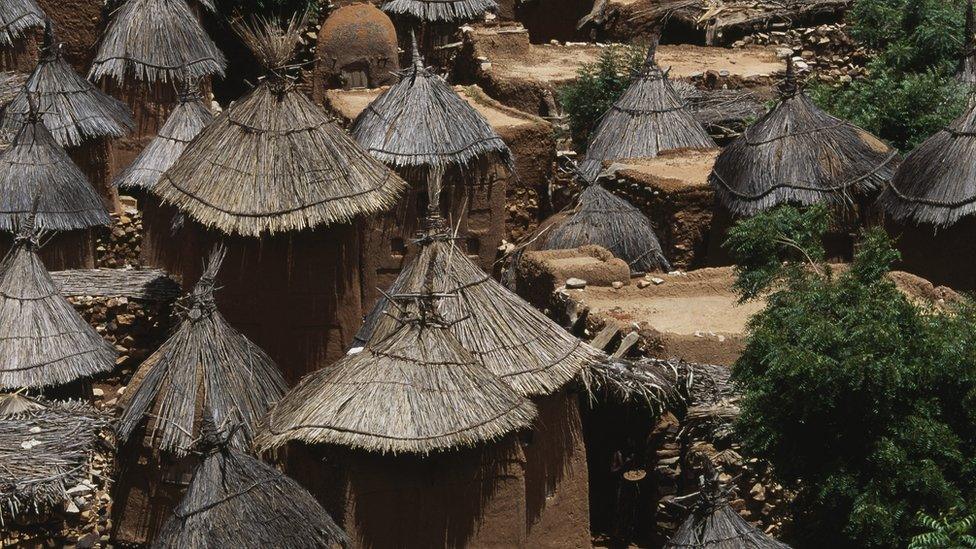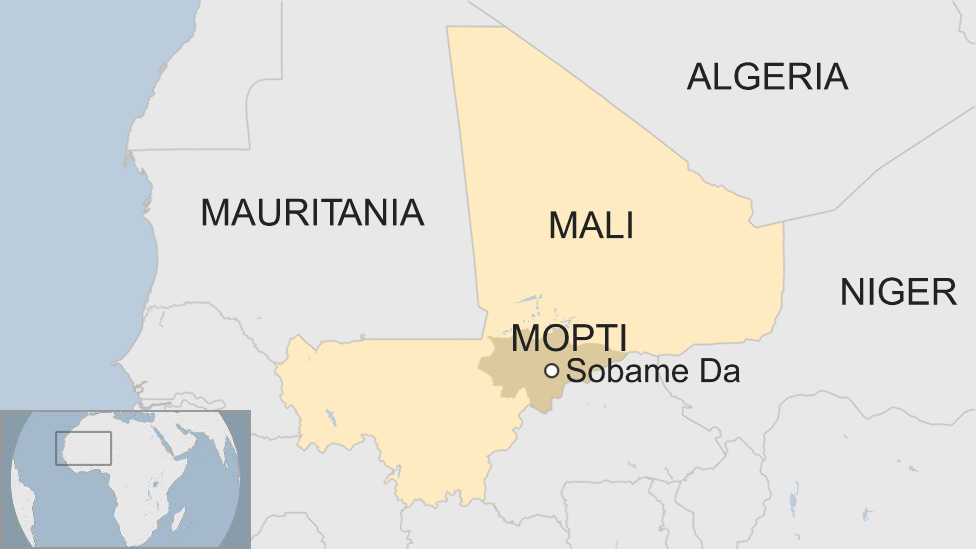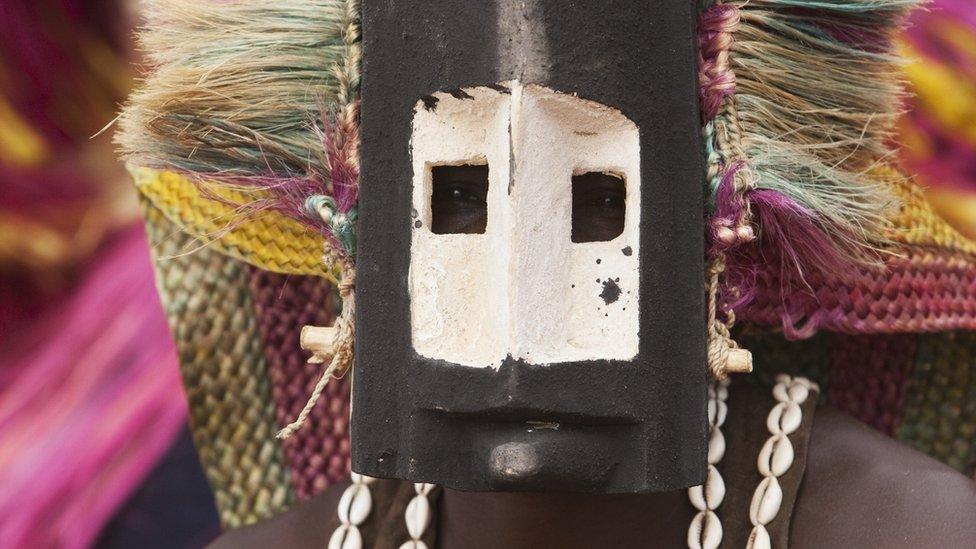More than 100 villagers safe despite Mali attack
- Published

Dogon villages often follow a traditional way of life
Some 108 people from a village in central Mali which suffered a deadly attack on Monday have been found safe.
Mayor Ali Dolo says that the group are now being sheltered in a school.
Officials say 95 people were found dead after the attack in Sobame Da, near Sanga town in the Mopti region. Many of the bodies had been burned.
There have been numerous attacks in Mali in recent months, some by jihadist groups, others between Dogon hunters and semi-nomadic Fulani herders.
The United Nations peacekeeping mission in Mali has sent aerial support to the area so as to prevent more violence.
A team of UN human rights investigators is also assisting Malian authorities in their investigation of the massacre.
But many houses were burnt down by the assailants and so identifying the victims has been a challenge for authorities.
President Ibrahim Boubacar Keita is returning home after cutting short a visit to Switzerland, while the prime minister is on his way to the village.
The government says the perpetrators are suspected terrorists, but an official from the area said he believed members of the Fulani ethnic group were responsible for the attack on the Dogon village.
What is the Dogon-Fulani conflict?
The Dogon people have lived in central Mali for centuries, and live a largely traditional way of life as settled farmers.
Many Fulani, on the other hand, are semi-nomadic herders who move across large distances in West Africa.

Friction between farmers and the roaming herders over resources is long-standing – but clashes between them have increased since a militant Islamist uprising in northern Mali in 2012.
Both sides accuse the other of carrying out attacks amid the unrest.
The Fulani, a largely Muslim ethnic group, have been accused of having links with the Islamist uprising. But for their part, the Fulani accuse a Dogon self-defence association, Dan Na Ambassagou, of attacks on them.
Is this attack unusual?
The attack on Sobame Da killed about a third of its inhabitants.
In the same region in March, more than 130 Fulani villagers were killed by armed men wearing traditional Dogon hunters' clothing.
In March, more than 130 people were killed in an attack on the villages of Ogossagou and Welingara
After the violence, the Dogon Dan Na Ambassagou, which denies involvement in attacks, was banned by Mali's government but has refused to lay down arms.
The United Nations mission in Mali, in a report dated 31 May, external, said the security situation in central Mali "continued to deteriorate".
It said that clashes between the Dogon and Fulani had been "exacerbated by the presence of extremist groups", and that the central region had recorded the highest number of attacks against civilians.
Hundreds of people have been killed so far this year.
What effect did the Islamist uprising have?
There are several Islamist groups based in northern Mali. In 2013, they seized half of the country and were advancing on the capital, Bamako.
France, the former colonial power in Mali, and some neighbouring African countries, intervened – and pushed the Islamist groups back towards their strongholds in the Sahara desert.
Before the unrest, disagreements between the Fulani and Dogon were often settled through negotiation.
But the uprising - which had spread to the centre of Mali by 2015 - decreased government control and increased the availability of weapons.
- Published25 March 2019
